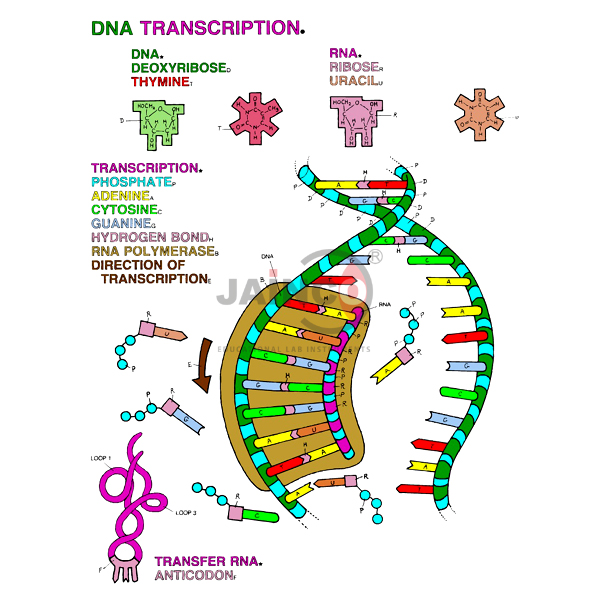

However, if the upstream portion of DNA is rewound and ejected from the enzyme, RNAP moves ahead. If RNAP rewinds the downstream portion of the DNA, the putative RNA transcript is released because the DNA-RNAP complex reverts to its initial open configuration. It can either continue towards productive initiation, or pull DNA towards itself, creating scrunched open DNA inside the polymerase. Escape from PromoterĪfter the first few nucleotides are added to the putative RNA transcript, RNAP enters a critical, unstable phase. Once the start site is located, the first two nucleotides of the transcript are bonded to each other. RNAP then cruises along the DNA scanning for the transcription start site inside the bubble. Thereafter, RNAP along with transcription factors unwinds a segment of the DNA and interacts with the exposed nucleotides in an open complex creating a ‘transcription bubble’. This is called a ‘closed complex’ between DNA and RNAP. Initially, after the binding of RNAP to the promoter region, the DNA remains in a double-stranded form.
#TRANSCRIBE DNA ACTIVATOR#
Prokaryotic RNAP binds with a sigma factor, while eukaryotic RNA polymerases can interact with a number of transcription factors as well as activator and repressor proteins. Transcription begins with the binding of an RNAP in the presence of general transcription factors to the promoter region upstream of the transcription start site on the DNA. Transcriptional activity is particularly high in the G1 and G2 phases of the cell cycle when the cell is either recovering from mitosis or preparing for the dramatic events of the next cycle of cell division. Two different genes on the same DNA molecule can have coding sequences on different strands. Other names for the template strand include antisense strand and master strand. Transcription machinery interacts with the template strand to produce an mRNA whose sequence resembles the coding strand. One strand of DNA is called the coding strand and the other is the template strand. Therefore, only the information in one of the strands is transferred into the nucleotide sequence of RNA. Transcription creates a single stranded RNA molecule from double stranded DNA. Therefore, the primary machinery for protein synthesis cannot enter the nucleus and stretches of DNA cannot exit the nucleus. While the nuclear pore has a diameter of about 5-10 nm, ribosomes are between 25-30 nm in size, many proteins are wider than 10 nm and fully condensed chromosomes can be over 2000 nm in size. In eukaryotes, transcription also plays an important role in transferring the information from DNA to the cytoplasm because the nuclear pore is too small to allow ribosomes, proteins or chromosomes to pass through. In addition, transcription adds another layer for intricate gene regulation, especially in species with large genomes that require minute adjustments in metabolism. Small errors in the RNA transcript can be overcome since the RNA molecule has a short half-life, but changes to the DNA become heritable mutations. In addition, separating DNA from the site for protein synthesis also protects genetic material from the biochemical and biophysical stresses of complex, multilayered processes. Transcription maintains the link between these two molecules and allows cells to use a stable nucleic acid as the genetic material while retaining most of their protein synthesis machinery. Therefore, DNA emerged as the preferred molecule for carrying genetic information since it is more stable and resistant to degradation. Additionally, the bonds on the sugar phosphate backbone of RNA are vulnerable to even mild changes in pH and can undergo alkaline hydrolysis. With evolution, proteins took over catalysis because they are capable of a greater variety of sequences and structures.


Life on earth is said to have begun from self-replicating RNA since it is the only class of molecules capable of both catalysis and carrying genetic information.


 0 kommentar(er)
0 kommentar(er)
